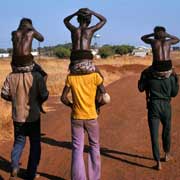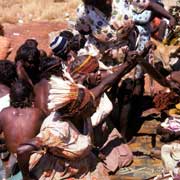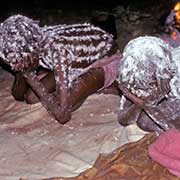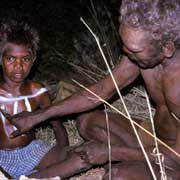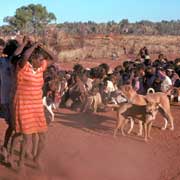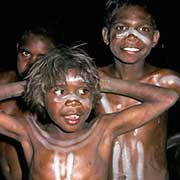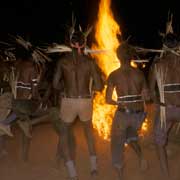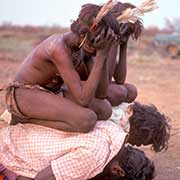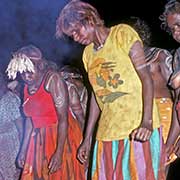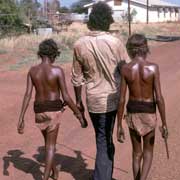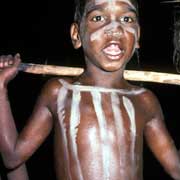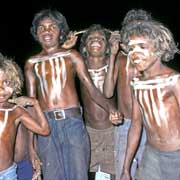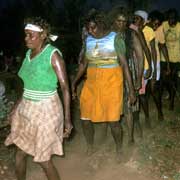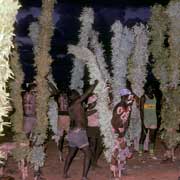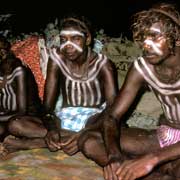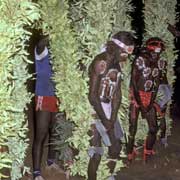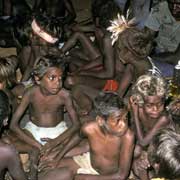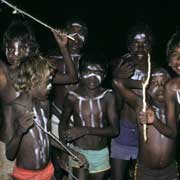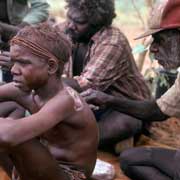Photos of Aboriginal Initiation Ceremonies from Central Australia
Aboriginal Initiation Ceremonies from Central Australia
In most traditional Aboriginal communities boys are initiated into manhood in a cycle of ceremonies where they are taught their traditional songs and shown the dances that are associated with it. Among the people of Central Australia, like the Warlpiri, Arrarnta (Arrernte), Pitjantjatjara, Pintubi and many others, the rituals may take place over many weeks. The most common and most elaborate ceremonies among the Warlpiri people, for example, are the "kurdiji" initiation ceremonies in which a number of boys of the same subsection (or "skin") are initiated together. "Kurdiji" means shield and refers to the wooden shields that are decorated with designs representing the "dreamings" or song cycles that are performed for that particular set of ceremonies.
you may then send it as a postcard if you wish.
The boys, usually aged between around 12 to 16 years, are taken from their mothers and painted all over with red ochre; a belt, made of woven strands of human hair is tied around their waists and they traditionally are taken on a journey to different communities, gathering people to participate in the rituals; or they may undergo those rituals over there. The women dance and often wail as the child will be lost, returning later as a man. The men perform various ceremonial dances associated with the dreamings belonging to the subsection of the boys; these may not be observed by women and children. The boys are taken into the bush to be shown a series of very secret-sacred ceremonies, but return to the general camp where they are kept in seclusion, only visited by men and boys. A number of all-night ceremonies are performed; some of these can be seen by all and, indeed, young boys are painted with white clay and join the initiates, jumping over a small fire and sometimes tossed into the air "to make them strong". But later into the night the initiates will be decorated with vegetable down and are made to sit on their knees, resting on their elbows, only getting up when sacred rituals are shown to them; women and children keep their heads covered then.
On the last day, the boys are painted with white ochre and then have to "demonstrate" to their mothers, when they enter the ceremony ground, that they have learned sacred knowledge, by performing a series of kangaroo hops; they are then shown "witi" dances in which men dance with long leafy poles tied to their legs. Everybody may watch that until the man who will perform the circumcision enters; women and children have to cover their faces and then the old men will shout, the "witi" poles are set alight as giant torches and the women and children flee the scene: the boys are then circumcised, marking the transition from child to "young man". A shorter version is called "Waruwarta" and is sometimes performed instead of the more elaborate "Kurdiji".
Usually they will remain in ceremonial seclusion for many weeks or even months, in which they will be shown more sacred rituals, until they are allowed to return to the general community. But this is only the first of many initiation stages: when they get older, more learning is to follow.




